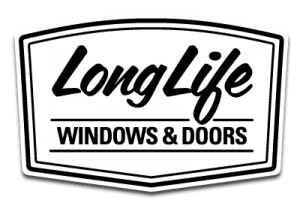Understanding Vancouver’s New Window Building Code
We have been getting a lot of questions about Vancouver’s latest code designed to help our homes use less energy. We wanted to break it down for you so that you can easily understand what is required to achieve the new code and explain what it means to you if you are replacing your windows and doors. Have a read through the information below and give us a call to get an estimate that will meet the requirements, stress free!

Understanding Vancouver’s New Window and Door Code
Here goes… Every 5 years the City releases a new Vancouver Building By-law (VBBL). The latest VBBL came into effect Aug 15, 2018 and includes a stricter energy efficiency window and glass door code. This new code requires all windows and glass doors to have a U-Value of 1.4 or lower (this can be rounded up to 1.44). This applies to single-family and duplex homes; Vancouver’s heritage-designated houses are exempt from the standard.
We can easily achieve this new requirement! Our window and glass door manufacturer Vinyltek, a local company, uses a high grade window, therefore we simply add a coding on double pane windows and patio doors that will hit this 1.4 U-Value requirement. No need to include triple pane which adds cost and can impact your design.

Q1. What is a U-Value?
A1. U-Value measures the rate of heat transfer. The lower the U-Value, the better the product’s ability to resist heat conduction. Like the R value is the thermal resistance of a wall, the U-Value is the thermal resistance of a component such as a window.
Q2. What Windows and Doors are covered by the 1.4 requirement?
A2. All windows and glass doors are covered by the U-Value 1.4 or lower requirement in new homes and renovations within the City of Vancouver. This includes factory glazed windows as well as site-glazed and commercial product types, and all window operating types (Fixed, Casement, Double Hung, Sliders, etc.).
Q3. What about new work in existing homes? If I am building an extension or renovation with windows, do they have to meet 1.4?
A3. Yes, new work must comply with the VBBL. The only exception is in heritage designated homes; in that case the U-value does not need to be achieved.
Q4. Do I have to install a triple pane window to achieve this 1.4 U-Value?
A4. Luckily no! Our manufacturer offers double glazing with specific coatings to achieve this requirement. When LoĒ-i89 is used in conjunction with LoĒ³-366 it meets the requirement which helps keep costs down and improved aesthetic.
Q5. Do all windows have to be labeled?
A5. Yes, all factory glazed windows have to be labeled with certified U-value labels as required by the BC Energy Efficiency Act. Site labeling is not permitted for factory glazed windows. All of our windows are delivered to site with the proper labeling.
Q6. Can the U-Values shown on product labels be rounded to one decimal place for code compliance?
A6. The Bylaw specifies U-Values to one decimal place of precision and allows a maximum 1.4 for windows and glass doors. You can round labeled U-Values with two decimals to one decimal for compliance to the bylaw. For example U-Values up to 1.44 will be accepted as complying with U-Value ≤ 1.4 as specified in the VBBL. U-Values of 1.45 or greater will round up to 1.5 and so will not be accepted.
Helpful Links for the 1.44 Window and Door Building Code:
https://www.cardinalcorp.com/products/coated-glass/loe-366/
*(The Vancouver Code Document code refers to ‘USI’ which simply means the Canadian U-Value System International, meaning it is calculated in metric units)
